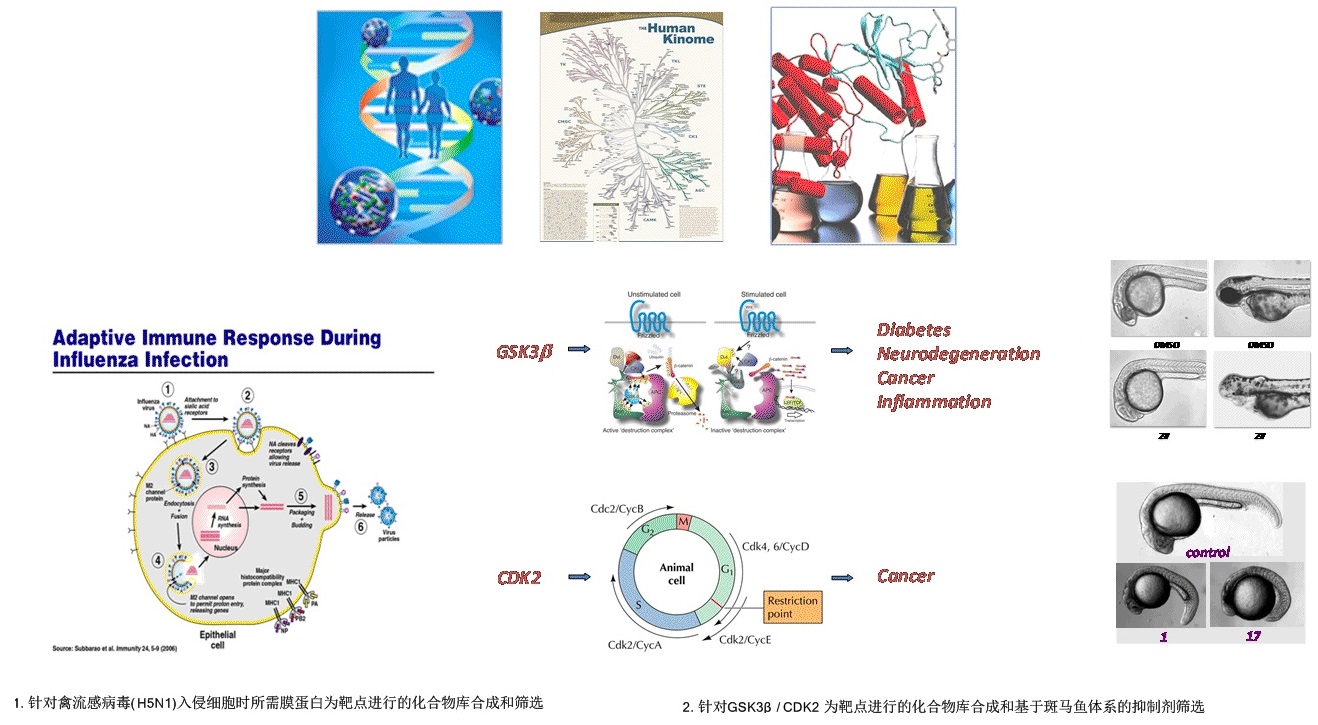Chemical Genetics Program
Chemical genetics is a research method that uses small molecules to change the way proteins work-directly in real time rather than indirectly by manipulating their genes. It is used to identify which proteins regulate different biological processes, to understand in molecular detail how proteins perform their biological functions, and to identify small molecules that may be of medical value.
The term chemical genetics indicates that the approach uses chemistry to generate the small molecules and that it is based on principles that are similar to classical genetic screens. Scientists use two kinds of genetic approaches-forward and reverse-depending on the starting point of the investigation. As the table illustrates, a classical forward genetic analysis starts with an outward physical characteristic (called a phenotype) of interest and ends with the identification of the gene or genes that are responsible for it. In classical reverse genetics, scientists start with a gene of interest and try to find what it does by looking at the phenotype when the gene is mutated.

